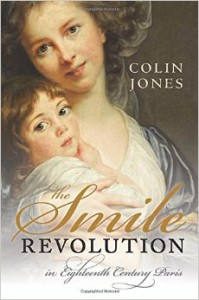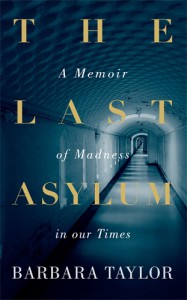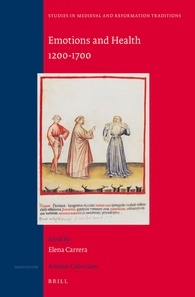15th JANUARY 2014
Jennifer Otter Bickerdike (University of East London)
Joy Devotion: A Year of Trash, Trinkets, and Tributes at the Ian Curtis Memorial Stone
For her doctoral research, Jennifer Otter Bickerdike captured images of the fans, flowers, and fauna every month over the course of a year at the grave of Joy Division frontman and lyricist, Ian Curtis. In this talk she will discuss how these ever-changing homages to the singer can provide unique insights into music, community, and memory.
This seminar takes place in the Francis Bancroft building, room 3.15.
26th FEBRUARY 2014
Chris Milnes (Birkbeck, University of London)
Pleasure, Medical Recovery, and ‘Euphoria’
This seminar will consider the complex relationship between pleasure, medical recovery and the word ‘euphoria’ in the history of European medicine. Prior to the late 18th century there appeared to have been an assumption that pleasure in the sick could sometimes be interpreted as a sign of medical recovery or health. The pleasure that was understood to accompany ongoing sickness or deteriorating health was usually constructed as singularly intense, creating a clear and recognisable distinction between the spectrum of pleasures associated with medical recovery and health and the singular intensity associated with ongoing sickness or deteriorating health. As a result of developments from the late 18th century onwards, however, it became clearer that a variety of pleasures of variable intensities could be experienced by both people recovering their health, enjoying good health, still experiencing sickness and also experiencing deterioration in health. The meaning of pleasure, its promise of the occasional moment of clarity within the mysterious realms of disease and otherness and health and sameness, became less reliable. This seminar will examine this phenomenon as it appears to have emerged in the 19th century and it will identify parallels between this history and the evolving meaning of the word euphoria, a word that by the close of the 19th century had taken on the ability to both console and trouble the people who used it.
This seminar takes place in the Francis Bancroft building, room 3.15.
19th MARCH 2014
Juan Zaragoza (Queen Mary, University of London)
Places to care, places to heal: Building ‘caring spaces’ in the late 19th century
Bram Stoker, the then almost unknown author of Dracula, published an interview with Arthur Conan Doyle in July 1907. Stoker went to Doyle’s house in Hindhead where, he noted:
“From where I sat the whole of the lovely valley, at the very head of which the house stands, lay before me. Due south it falls away, spreading wider as it goes, till its lines are lost in distance, an endless sea of greenery. Far away there are ranges of hills piling up, one behind the other, in undulations of varying blue. Even the whole sweep of the horizon visible from our altitude is like a wavy sea.”
A fairy tale-like vista. No wonder that Hindhead was known as ‘the English Switzerland’. The similarities went beyond landscape, and that was what had attracted Doyle: “If we could have ordered Nature to construct a spot for us we could not have hit upon anything more perfect”. But, perfect for what? Doyle elaborated in the same letter to his mother: “its height, its dryness, its sandy soil, its fir trees, and its shelter from all bitter winds present the conditions which all agree to be best in the treatment of phthisis.”
Arthur’s wife had phthisis and Hindhead’s landscape and weather conditions were like those in Switzerland, where they had spent much time from 1894 to 1896, all the while missing England and London’s literary social life. In 1895, after speaking with Grant Allen – fellow author and a consumptive himself – Arthur set about constructing his own therapeutic landscape:
“I rushed down to Hindhead … [where] I bought an admirable plot of ground, put the architectural work into the hands of my old friend [Henry] Ball of Southsea, and saw the builder chosen and everything in train before leaving England. If Egypt was a success, we should have a roof of our own to which to return. The thought of it brought renewed hope to the sufferer.”
Arthur’s house at Hindhead was built to actively take care of his wife. That is, it was a caring space. My questions are: is that possible? There could be places actually taking care of someone? And, if so, how should they be? Arthur Conan Doyle’s story will help us to illuminate some of these issues.
This seminar takes place in the Senior Common Room, Arts Two.
7th MAY 2014
Kirsty Martin (University of Exeter)
‘We must make happiness’: Virginia Woolf, Creativity and Contentment in the Early 20th Century
The paper takes as its starting point Woolf’s statement in her 1940 essay ‘Thoughts on Peace in an Air Raid’ that in order to create peace in the future, ‘We must make happiness’. It explores the idea of ‘making happiness’ in Woolf’s work, with a particular emphasis on Mrs Dalloway (1925) and The Years (1937). It also aims to show how Woolf’s work was shaped by broader concerns relating to post-war reconstruction – especially thinking about attempts to re-construct well-being – and arguments for the importance of ‘public happiness’ made by physicians, economists and psychologists. It suggests how Woolf’s work might complicate ongoing thinking about increasing national happiness. With current research into happiness across politics, economics and philosophy, and with politicians including David Cameron suggesting that as well as increasing GDP we need to increase national happiness, the topic of well-being is prevalent in public discourse. This paper will suggest that Woolf’s work provides a way of understanding such concerns, and that she complicates arguments both for and against attempts to increase national happiness. Her work suggests strongly that ‘making happiness’ might always be allied with the fictional, always involving an element of make-believe, always needing to be crafted into existence.
This seminar takes place in the Senior Common Room, Arts Two.
4th JUNE 2014
Matthew Klugman (Victoria University, Australia)
A New Mania? Tracing the Emergence of Passionate Modern Spectator Sport Cultures in Manchester, Melbourne and Boston
The mid to late 19th century saw the emergence of intense experiences, expressions and communities of emotion that fuelled the rise of institutions of immense social, cultural and economic power – modern spectator sports. Discussion of the followers of these sports was characterised by intimations of excess and pathology typified by references to ‘mania’, ‘fever’ and ‘madness’. Yet while the social history of sports like Association football, baseball and Australian Rules football has been studied in some detail, these new, often disconcerting cultures of passion that they engendered have been neglected. This paper will use the emergence of modern sports followers to create a place for exchanges between the histories of emotion, sport, urban centres, medicine and “civic” religions. At issue are questions of new and old pleasures and suffering, the intense visceral dimensions of these, the links and cross-over between different forms of mass entertainment and popular culture, and the way mere games could come to seem ‘more important than the fate of nations’ to those who followed them.
All seminars begin at 1pm and lunch is provided. Seminars are scheduled to finish at 2pm but participants are welcome to stay and extend discussion beyond that time if they wish.
To reserve your place, please email emotions@qmul.ac.uk.
 The Centre is proud to announce a new book by Professor Colin Jones: ‘The Smile Revolution in 18th century Paris’.
The Centre is proud to announce a new book by Professor Colin Jones: ‘The Smile Revolution in 18th century Paris’. 
